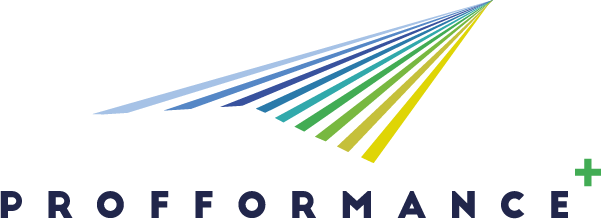We Teach Together!
We Teach Together! Participatory Higher Education Method
- 01 - Education
4. Impact and mission with and for society
- Teaching through real social projects addressing society’s global challenges
The ‘We Teach Together!’ method has its roots in the participatory paradigm espoused by Disability Studies.Traditional academia tends to create an ableist environment that hinders the participation of disabled people. As we know from the theory and practice of participatory research, the active involvement of disabled persons generates more valid questions and results, as well as a more socially just environment and more effective social support systems. By combining life experiences with theoretical knowledge, students receive a more in-depth understanding of human diversity and equality. Innovation: Our method is innovative, because we not only invite disabled people to university courses as guest experts by experience for a few lectures, but also continously work together as a team of co-instructors from planning to evaluation. Outcomes/activities: Each semester we choose topics for our project-based seminars, and we organize the classes and asses the work of our students together. Disabled co-instructors support students in creating inclusive projects for and together with disabled people. We regularly disseminate our work in article journals that use scientific language or plain language, we are active on social media and attend national and international conferences as well. Based on our student’s feedback, the method helps them to strengthen their professional identity as helping professionals, to understand the ethics of support, to learn to communicate by using accessible language and tools. In 2019, we published a book on the theory and practice of inclusive higher education and created a MOOC course about the method's main pillars. Our disabled colleagues work on temporary contracts and are always paid for their involvement. Besides the inclusive team teaching method, the know-how also includes the pillars of participatory supervision, which ensures constant self-reflection and mental support. The third pillar is the shadow tutor who acts as a mentor during the adaptation to other training areas in higher education. Similar European approaches have been applied in Germany, Austria, England and Ireland, but to our knowledge, no other initiative can be compared to the complexity and sustainability of the We Teach Together! method. The adaptability and sustainability is demonstrated by the fact that in recent years we have successfully applied it in the training of mainstream teachers, social workers and theologians.
Methodology
Tools, equipment, technology used
Outcomes and outputs, main results
Lessons learnt
Adaptability and sustainability of the best practice (for other institutions)
Promotion of best practice
Scope and impact
- Course/department level
- Faculty level
- Institutional level
- Cross-institutional level
6.1 Digitalization
- Innovative, novel methodology in using digital tools/devices in teaching
- Digital skills development and assessment both general and profession-related, embedded in course design, in teaching and assessment
- Novel digital solutions (tools, frameworks, devices, tasks to enhance efficiency and motivation)
Reasoning: We use file-sharing systems, Moodle, Canvas, and MS Teams groups to work with students. Course materials are enriched by digital visual aids, including images and videos created by disabled people. To engage students, mentimeter, kahoot and other interactive platforms are used. Some of the co-instructors communicate with the help of augmentative and alternative tools, such as BLISS boards. Using them in the classroom gives us the opportunity to experience diverse forms of communication together
6.2 Internationalization
- Students engagement in international projects
- Courses implemented in international cooperation (projects, co-teaching, virtual/blended mobility, etc.)
- Courses offered to international multicultural students both online and offline
- International projects/research results embedded into course development and T&L
Reasoning: We apply the method in Erasmus courses and starting in Fall 2025, we will also offer two courses based on this method within the English BA program at our faculty. In 2021, we offered a joint interdisciplinary course on inclusive project development with Tallinn University. We successfully implemented the method in the Erasmus+ PODIUM project and are currently working on an Erasmus+ proposal on the topic of teacher diversity. The adaptation of the method involves Romanian universities.
6.3 Inclusion and diversity, universal design
- Inclusive course design, universally designed divers activities to meet special students' needs
- Universally designed teaching material - adjustable for special needs
- Innovative teaching methodology for inclusion and meet diverse student needs
- Alternative, flexible assessment methods for students with special needs
- Senzitivizing students to consider special needs when practicing their profession
- Course includes hints on how the services/products of the profession could be universally designed/inclusive
Reasoning: Our faculty building is fully accessible and inclusion is an integral part of the organisational culture. Courses are tailored to the needs of participants with disabilities as their core value is inclusion. Each syllabus contains a diversity statement. Diverse teaching methods, including audiovisual materials, written texts, games, group work, discussions, and project work, optional types of assignments provide inclusive support for all learners. Easy-to-understand communication ensures accessibility for individuals with learning difficulties or language barriers. During the seminars, the partnership among instructors serve as role models for students, who often meet individuals with disabilities for the first time. Working with at least one disabled person during projects fosters sensitivity to different needs. The evaluation of their projects always consider the use of accessible practices. Students feel free to express their own identities and needs more effectively.
6.4 Sustainability
- Sustainability goals are addressed in the course(s)
- Teaching material contains profession related sustainability aspects
Reasoning: By providing disabled people employment, salaries and meaningful activities, we support the 3. and 8. element of EU's Sustainable Development Goals. We involve disabled females, and people of colour with disabilities, who experience multiple types of opression, thus we encourage gender equality (5th goal) and reduce inequalities (10th goal). "We Teach Together!" itself has proven to be an effective tool for a more just and equitable future that includes people regardless of their support needs.
3.3 Public contact datas
| Name | Email address | Website |
|---|---|---|
| Disability Studies and Social Innovation Lab | sandor.aniko@barczi.elte.hu | https://www.facebook.com/DSSILab |

